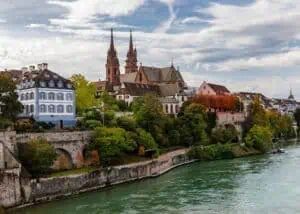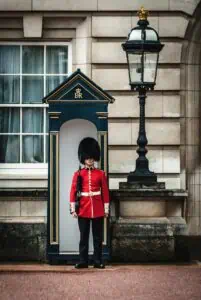A journey into the past, visible until today
Of the well over 100 Hanseatic cities that already existed in the Middle Ages, only a few remained by the time they were dissolved in June 1920. Since the Hanseatic cities were able to retain their independence into the German Empire, they were given an “H” for “Hanseatic city” in front of the initial letter of their national number plate when the number plates were introduced in 1906. They were mainly “free” cities, meaning that these cities governed themselves and were not subject to any local ruler, but only to the emperor himself. As city republics, the Hanseatic cities later acted in the German Empire from 1871-1918 like the mighty Venice once did. The location of these cities was not only directly on the sea, but also in the interior of what is now Nordrhein-Westfalen, as well as in Eastern and Northern Germany.
What is the Hanseatic League and how did it come into being?
In the 11th century, when Central and Northern Europe’s population began to grow rapidly, the demand for goods of all kinds grew, for example, food, clothing, raw materials and commodities were in keen demand. The number of long-distance traders, who travelled both by land and by sea, increased accordingly. Thus, people formed loose alliances and connected many small, isolated markets to form a large, cohesive economic area. The specialization of individual regions was also promoted at the same time: For example, thousands of tons of English wool and ash from Riga (needed for dyeing) were transported to Flanders at that time. Without these deliveries of goods, the textile industry there would not have been able to produce more than two million metres of cloth per year around 1340.
How could one become a Hanseatic city in those days?
The contribution, the so-called “Hanseatic League” for membership in such an alliance, is what gave the alliance its name. The advantage was to be able to guarantee security for the members through joint voyages. It also offered uniform weights and measures, some trading privileges, military strength, tax exemptions and a broad network. The organ of the Hanseatic League was the so-called Hansetag. Unfortunately, neither accession treaties nor statutes can be found today. For this reason, it is difficult to trace which cities actually took part. Cooperation was not always easy, however, as there were constant crises that forced the trading cities to act in a uniformly coordinated manner until a German Hanseatic League was finally formed, which also successfully went to war in 1368 against the Danish king Waldemar, who had massively threatened their trade.
The golden age of the Hanseatic League
The peak of the Hanseatic League was between the 14th and 16th centuries, when as many as 200 cities joined the alliance. As soon as a city expected to gain an economic interest or financial advantage, it joined the alliance. However, as this was voluntary, there was neither a fixed organisation, nor a constitution, nor a common treasury, nor a seal.
Lübeck – was the first Hanseatic city
Founded in 1143, the city of Lübeck on the course of the Trave was the first Hanseatic city. As the first secure Hanseatic city on the Baltic Sea, it was later even called the “Mother of the Hanseatic League” or the capital of the Hanseatic League. Economic foresight and leadership in military conflicts preceded this title. Indeed, Lübeck was considered the most powerful of all Hanseatic cities. Testimony to this are the fortifications that can still be admired today, including the Holsten Gate, on which 30 cannons stand. The inscription reads ” Concordia domi foris pas” (Concord inside, peace outside). An inscription from 1871, which is a shortened form of the original inscription on the front gate, which no longer survives: Concordia domi et foris pax sane res est omnium pulcherrima (“Concord inside and peace outside are indeed best for all”).
Other important Free Hanseatic Cities Hamburg and Bremen
Apart from Lübeck, Hamburg and Bremen also carry the title “Free and Hanseatic City”.
Up to the present day, the special political status of these two German city states and Hanseatic cities is a consequence of the late Middle Ages.
The fall of the Hanseatic League
After 1500, a new generation of merchants took over the trading houses, but the confederation still seems to have survived as a community. However, young merchants willing to take risks opened up new markets and new desirable trade goods such as sugar and exotic woods were discovered. The older generation remained fixated on the old bases, most of which were hardly profitable any more. Thus, the different interests of the merchants led to the beginning of the seeds of the Hanseatic League’s decline. Like its rise, however, this process took centuries. There is no document that records the end of the Hanseatic League. Parts of the alliance remained alive even after the last Hansa Convention in 1669, at which delegates from only six cities gathered. The cities of Bremen, Hamburg and Lübeck as Hanseatic legations were dissolved on 30th June 1920 in Berlin.
However, the traces have not yet faded, whether it is the Holsten Gate in Lübeck, the Speicherstadt in Hamburg or the facade of houses in the old town on the market square in Bremen.
A city tour into the past, clearly still noticeable today, is always worth a trip at any time of year.





